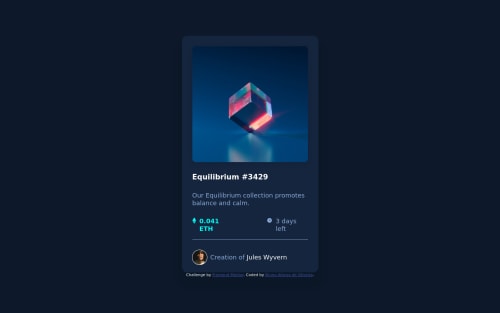Submitted over 3 years agoA solution to the NFT preview card component challenge
CSS Flexbox; Semantic HTML; Media Query
@BrunoAfonsoOliveira

Solution retrospective
I had a hard time keeping the elements within the limit of their space, I ended up letting a padding pop out of the box
Code
Loading...
Please log in to post a comment
Log in with GitHubCommunity feedback
No feedback yet. Be the first to give feedback on Bruno Afonso's solution.
Join our Discord community
Join thousands of Frontend Mentor community members taking the challenges, sharing resources, helping each other, and chatting about all things front-end!
Join our Discord